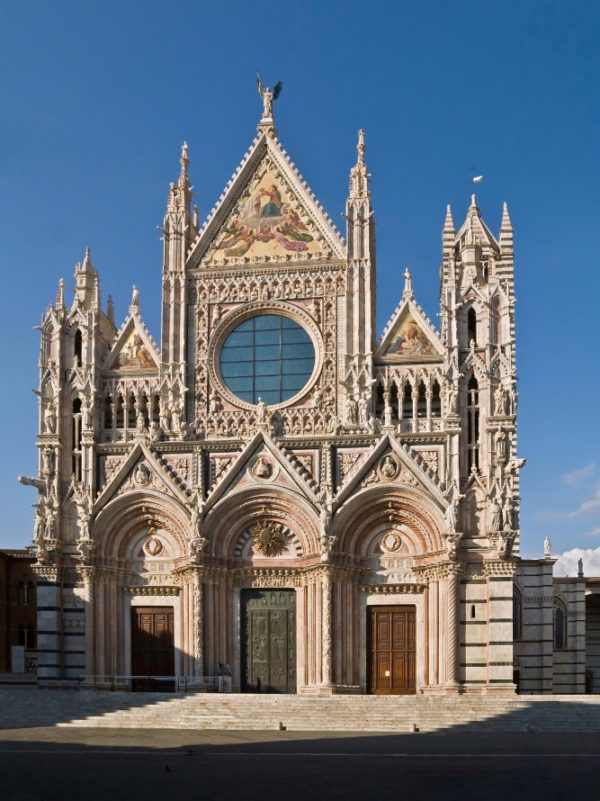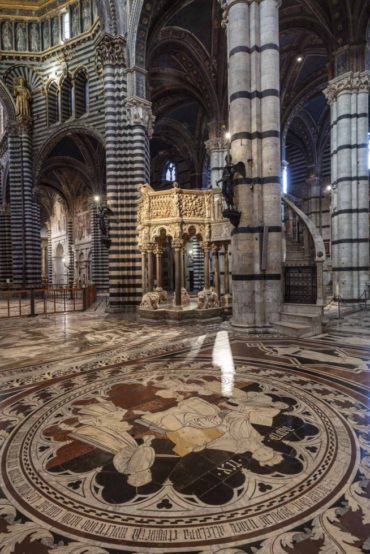The Cathedral of Siena


The Cathedral of Siena
The Cathedral of Siena (Cathedral of Santa Maria Assunta) was consecrated in 1179 in the presence of the Sienese Pope Alexander III. Tradition has it that the current cathedral replaced a previous church dedicated to Mary and built around the 9th century.
The dome was finished around 1262 while the work of masters such as Nicola Pisano and his son Giovanni, who owned the sculptures of prophets and other statues now preserved in the Opera Museum, was already underway.
The current statues are therefore copies that replaced the originals between 1800 and 1900.
The Cathedral of Siena is rich in masterpieces of Italian art created across various centuries. Prominent is the floor of the Cathedral, made up of fifty-six inlays in turn executed by important Sienese artists with the exception of the Colle della Sapienza, inlay executed by Pinturicchio (1505). The completion of this work took several centuries and was completed only in the nineteenth century.
In terms of sculptures, the Cathedral of Siena hosts prominent works executed, among others, by Michelangelo (St. Peter and Paul – St. Pius and St. Augustine for the Piccolomini altar), Nicola Pisano (Pulpit) and Gian Lorenzo Bernini (Maria Magdalene and Saint Jerome).
The Cathedral of Siena also houses the famous Piccolomini Library with the cycle of frescoes painted by Pinturicchio and his collaborators. In the display cases along the walls, antiphonaries and graduals from the 1400s and 1500s are preserved, decorated with elaborate and precious miniatures.
The Cathedral’s stained glass windows are also of considerable value; the most famous, performed by Duccio di Buoninsegna, can however be admired in the Opera Museum. In the chapel of the Sacrament you can admire two stained glass windows from the workshop of Domenico Ghirlandaio.
The beautiful Choir was executed by the renowned carver Fra Giovanni da Verona (1456-1525) who inserted thirty-eight inlays (originally placed in the choir of the Monteoliveto Maggiore abbey) in the two wings of the fourteenth-century choir.
Entrance to the Cathedral is subject to a fee, for more information and ticket reservations click here.
